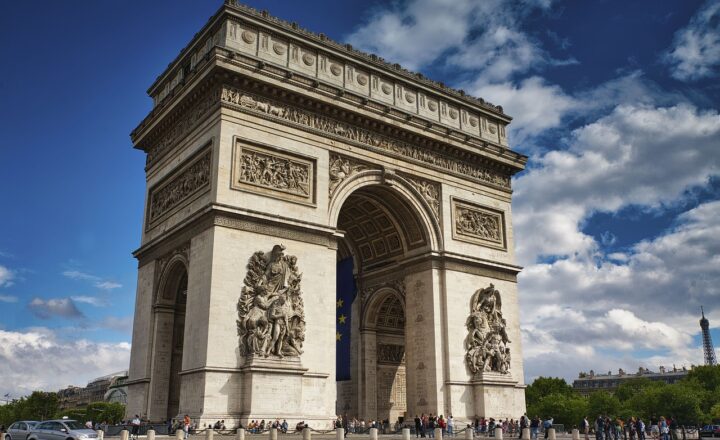How the Great Fire of London Transformed a City and Redefined Architecture
November 16, 2024

The Great Fire of London, which raged from September 2 to September 6 in 1666, is one of the most significant events in the history of the English capital. This devastating inferno resulted in not just the destruction of the medieval city but also an opportunity for significant changes in urban planning and architecture. This article explores the implications of the Great Fire, shedding light on how it transformed London and redefined architectural practices.
1. The Setting: London Before the Fire
Before diving into the effects of the fire itself, it is essential to understand what London was like in the 17th century. The city was characterized by narrow streets, wooden buildings, and a chaotic mix of commercial and residential structures. This congestion and the construction materials used made London particularly vulnerable to fire.
The architecture was often haphazard; houses were built close together, sharing walls in some cases, which allowed flames to spread quickly.
2. How the Great Fire Started: A Brief Overview
The origins of the Great Fire can be traced back to a small bakery on Pudding Lane owned by Thomas Farriner. On a Sunday night, a spark from his oven ignited the surrounding wooden structures. Strong winds quickly spread the flames, and within a few hours, it spiraled out of control. The fire enveloped a significant portion of London, destroying over 13,000 houses, numerous churches, and St. Paul’s Cathedral, displacing thousands of citizens.
The immediate aftermath of the fire saw a devastated city, yet it also opened up discussions on how to rebuild.
3. The Immediate Aftermath of the Fire
In the wake of destruction, it became apparent that London needed a complete overhaul. The system of governance and urban planning had to adapt to the new reality. Lord Mayor Sir Thomas Bloodworth’s failure to act effectively during the fire led to criticisms of city management, emphasizing the need for better leadership and design in future urban planning.
One of the most pressing issues was housing; thousands were left homeless and livelihoods were destroyed. The demand for new houses was immense, and the rebuilding efforts would forge a new identity for London.
4. Rebuilding London: The Role of Sir Christopher Wren
One of the most pivotal figures in the reconstruction of London was Sir Christopher Wren, an architect and astronomer who would later be credited with designing the new St. Paul’s Cathedral. Wren and his contemporaries recommended new building regulations, including the use of fire-resistant materials like brick and stone, replacing the prevalent wooden structures.
Wren’s vision was also innovative; he proposed a city more organized with broader streets, parks, and public spaces, culminating in a shift from medieval town planning to a more modern approach.
5. Architectural Innovations Post-Fire
The Great Fire catalyzed several architectural advancements:
- Use of Fire-Resistant Materials: The shift from timber to brick and stone significantly changed London’s skyline and greatly improved structural integrity.
- Wider Streets and Planning: The incorporation of wider streets enhanced traffic flow and reduced the chances of future fires spreading as rapidly as the Great Fire did.
- Public Health Considerations: The need for sanitation and public health measures went hand in hand with urban planning. The new city had better systems for waste disposal and access to water, paving the way for improved living conditions.
- Architectural Styles: Baroque architecture gained prominence as seen in the distinctive dome of St. Paul’s Cathedral, which became a symbol of London’s resilience and rebirth after the fire.
These innovations spurred a movement towards neoclassicism and modern architecture that would influence generations to come.
6. Cultural and Economic Impacts
The fire also had profound cultural and economic repercussions. Its obliteration of the medieval city made way for a metropolis that reflected modern values. New institutions were established, including the Royal Exchange and the Bank of London.
Moreover, it prompted a cultural renaissance, influencing literature, art, and civic pride. The rebuilding of monuments and churches became excellent opportunities for artists and craftsmen, ushering in a new cultural era in London.
7. Lessons Learned: Fire Safety and Urban Planning
The lessons learned from the Great Fire of London resonate even today. Modern cities still grapple with issues of fire safety and urban planning. The need for regulations that ensure the preparedness of a city against the dangers of fire has never been more critical, ensuring the preservation of lives and property.
Cities worldwide continue to study the events of 1666 to prevent similar catastrophes from occurring in the future.
Conclusion: A Legacy of Resilience
The Great Fire of London was indeed a tragedy, but it also marked a turning point in the city’s architectural and urban landscape. Through the aftermath, London emerged from the ashes as a symbol of resilience and a blueprint for modern urban planning. The fire changed not just the fabric of the city but also the way cities worldwide approached architecture and planning, leaving a lasting legacy on urban environments. Future generations can continue to learn from this event, understanding the importance of adaptive design and resilience in the face of calamity.







